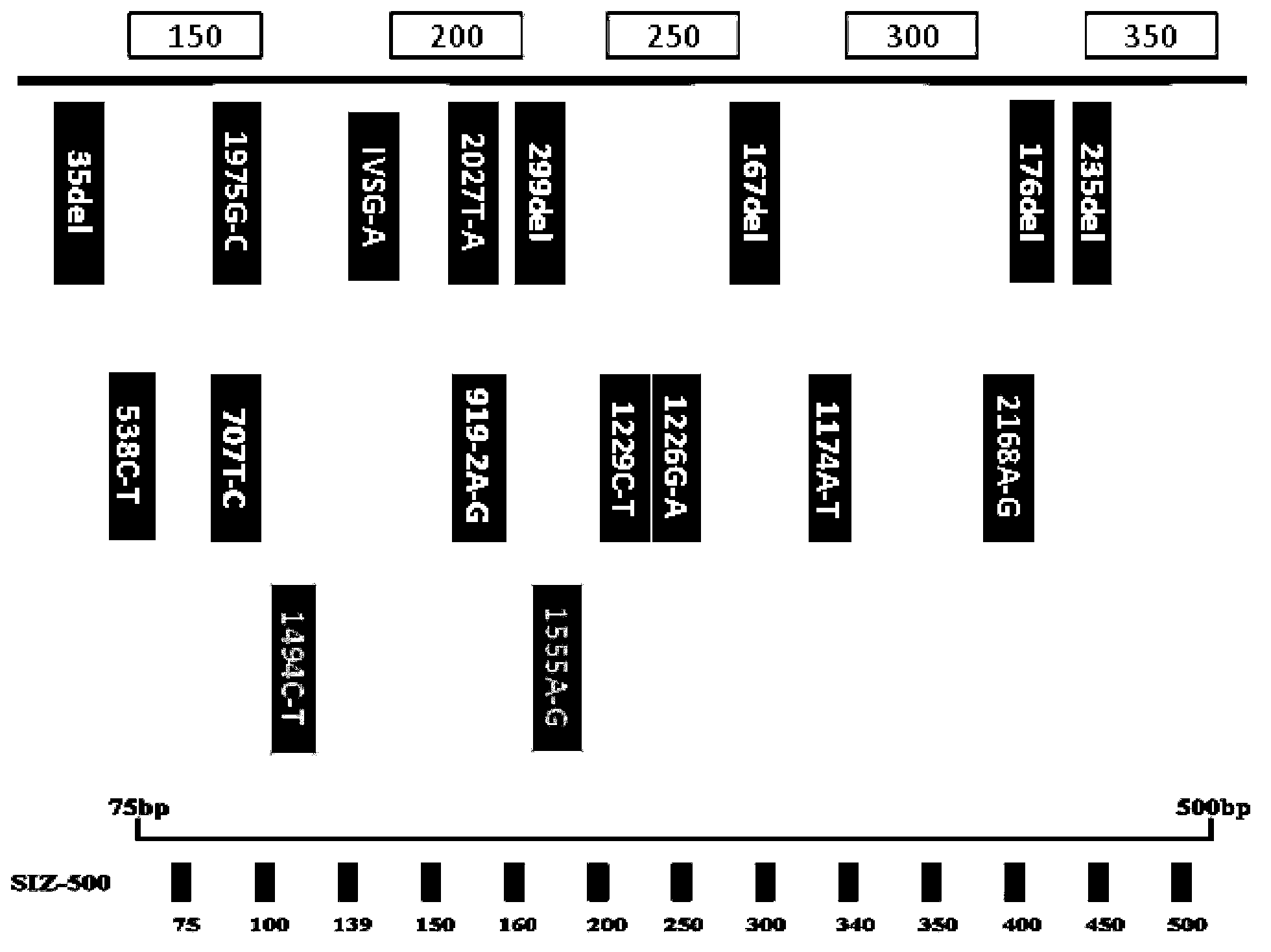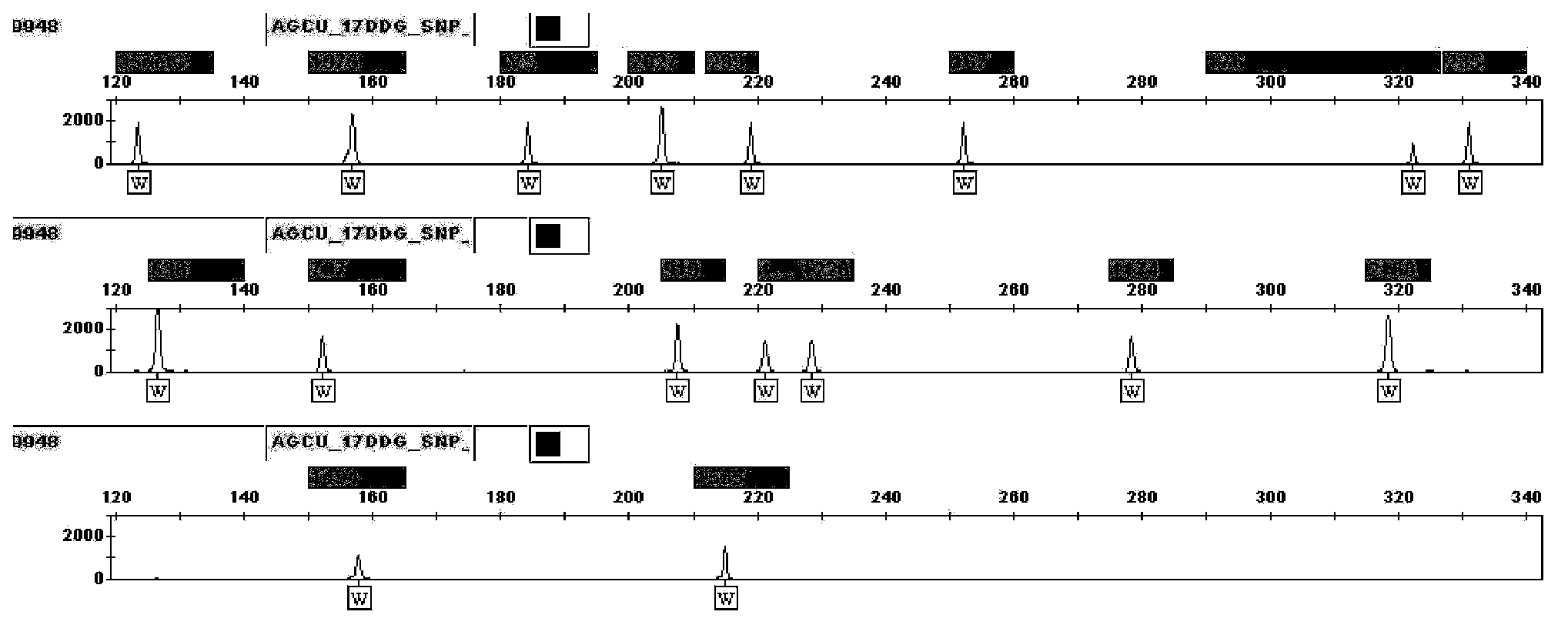Gene detection kit for hereditary hearing loss
A technique for hereditary deafness and genetic testing, applied in the determination/inspection of microorganisms, biochemical equipment and methods, etc.
- Summary
- Abstract
- Description
- Claims
- Application Information
AI Technical Summary
Problems solved by technology
Method used
Image
Examples
Embodiment 1
[0052] 1. Determination of polymorphic loci
[0053]The polymorphic sites selected by the present invention all have high polymorphic information content, including the hotspot mutation sites of the deafness gene in the Chinese population, which greatly improves the haplotype diversity as a whole. Through large-scale sequencing screening, the 17 sites selected in the present invention are shown in Table 3. Through the polymorphism investigation of deafness-causing genes in the Chinese population, literature research, and database analysis, a total of 17 hereditary deafness mutation sites were finally identified, including 235delC, 299-300delAT, 176-191del16, AIVS7-2G and A1555G It is a hotspot mutation site in Chinese deaf population. Guarantee the identification ability of the human hereditary deafness gene DNA testing system.
[0054] Table 3 All 17 polymorphic sites involved in the present invention
[0055] site
rCRS
site
rCRS ...
PUM
 Login to View More
Login to View More Abstract
Description
Claims
Application Information
 Login to View More
Login to View More - R&D
- Intellectual Property
- Life Sciences
- Materials
- Tech Scout
- Unparalleled Data Quality
- Higher Quality Content
- 60% Fewer Hallucinations
Browse by: Latest US Patents, China's latest patents, Technical Efficacy Thesaurus, Application Domain, Technology Topic, Popular Technical Reports.
© 2025 PatSnap. All rights reserved.Legal|Privacy policy|Modern Slavery Act Transparency Statement|Sitemap|About US| Contact US: help@patsnap.com



